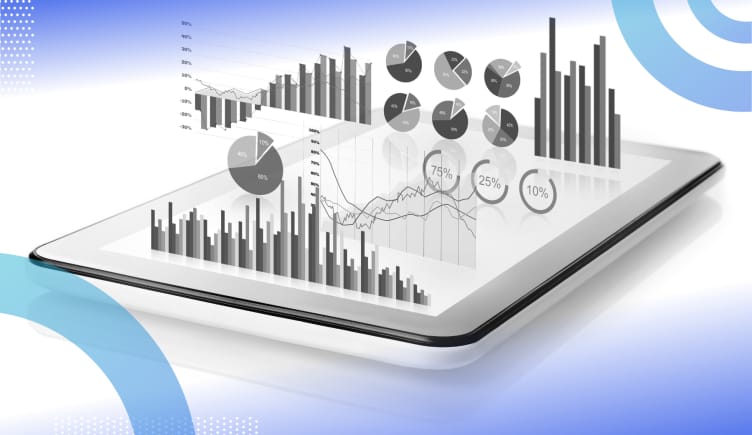Data visualization efforts must include the insights received from data, trends and patterns found within the data, as well as a way to discern complex data in a simplified manner. Data visualization comes in two basic forms: static visualization and interactive visualization.
2 Types of Data Visualization
- Static visualization refers to a method of displaying data that tells focuses on only a single data relationship.
- Interactive visualization allow users to select specific data points in order to present findings and create customized visual stories to compare against each other.
Why Is Data Visualization Important?
Data visualization is important for communicating complex business insights and analysis results to all stakeholders in a simplified manner.
Data visualization is a method of understanding and displaying complex data and powerful insights. Strong data visualization allows for better communication with stakeholders throughout an organization, which is crucial to growing a business and capitalizing on new opportunities. The amount of raw enterprise data multiplies yearly and continually presents new information that, when analyzed, can help uncover trends regarding customer behavior, market evolution, overall consumer habits and more.
Data visualization, when preceded by the use of data mining and data modeling techniques, allows analysts to discover vital insights within large data sets. Data visualization helps analysts easily communicate those insights for immediate action.
What Are the 2 Types of Data Visualization?
The two basic types of data visualization are static visualization and interactive visualization.
Static Visualization
Static visualization refers to a method of displaying data that tells a specific story and focuses on only a single data relationship. A common example of static visualization is an engaging single-page layout like an infographic.
Interactive Visualization
Interactive visualizations, for the most part, only exist within software or web applications. This model allows users to select specific data points in order to present findings and create customized visual stories to compare against each other, thereby creating the opportunity for stakeholders to choose from a selection of insights to determine the best path forward, rather than deciding based on a single insight.
Both static and interactive visualization methods present opportunities to display data clearly and accurately. Data analysts should use their best judgment based on the target customer, data story and ROI when deciding on which visualization method to use.
What Are Data Visualization Best Practices?
Some best practices for data visualization include speaking to a specific audience, choosing a proper visualization and providing context.
It is crucial to follow best practices when presenting data visualizations:
- Know Your Audience: Data should always be used to tell a story and uncover trends. It’s vital to know who will be most interested in the information and tailor your visualizations so they can digest the data.
- Choose the Correct Visual: Data visualizations should always present the data in a way that makes it easy to understand. For example, a chart may be the best method of displaying data with a high degree of variability, while graphs may be better for displaying changes in data over time.
- Provide Context: Data without context isn't very helpful, so the data visualizations you choose to put the information in perspective is important. A good visualization will not only show the data is relevant and easily provable, but will also tell a cohesive story.
- Keep It Simple: Simple visualizations and dashboards go a long way in data visualization because they allow stakeholders to easily reference data and make informed decisions without becoming confused by the data’s purpose.
- Engage the User: Lastly, engagement is important when presenting complicated data to stakeholders. To prevent users from becoming overwhelmed or intimidated, the overall design and user experience should be graspable without being intimidating.


